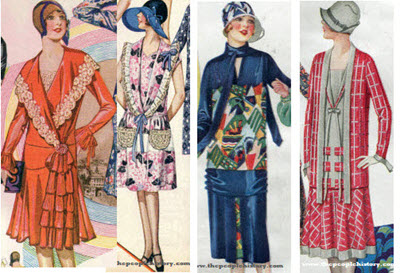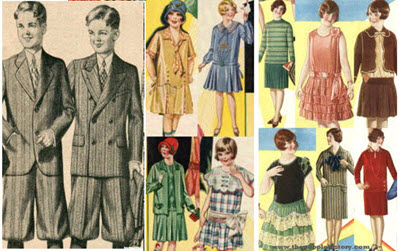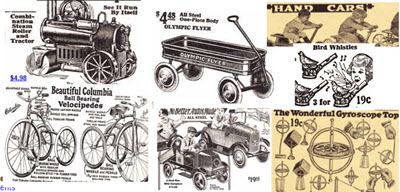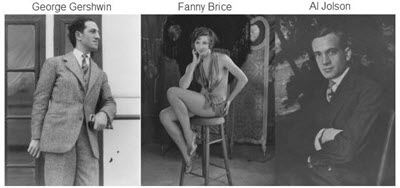1840 to 1849 Important News, Key Events, Significant Technology
1840, 1841, 1842, 1843, 1844, 1845, 1846, 1847, 1848 and 1849 History
Major News Events From 1840 to 1849
- 1840 May 1st First Postage Stamp ( Penny Black )
- 1841 Wagon Trains Start The Journey To California
- 1842 Hong Kong Island was handed to Britain by China in 1842's Treaty of Nanking
- 1843 The Oregon Trail , The 1843 wagon train was comprised of about nine hundred people
- 1844 May 24th Morse's first electronic telegram
- 1845 October 10th The U.S. Naval Academy of Annapolis was founded
- 1846 June 19th U.S. - First official Game Of Baseball
- 1847 Mormon Followers Led By Brigham Young Arrive in Utah
- 1848 January 30thThe California Gold Rush starts
- 1849 American inventor Walter Hunt patented the Safety Pin
Find More Detailed Information Below
1840
British Colonists Arrive In New Zealand , The Treaty of Waitangi was signed in 1840. The British government had sent a representative to New Zealand to calm Maori tribesmen. At Waitangi, in February 1840, the majority of the Maori chiefs agreed to cede sovereignty of the islands to Queen Victoria. In exchange for this they wanted the precedence of own lands and a guarantee of protection.
First Postage Stamp , Under a number of reforms proposed by Sir Rowland Hill including a standard price for sending a letter (prior to this, it was the person who received the letter who paid how much was due depending on weight and distance traveled). In 1840, the first stamp is issued which featured a black and white portrait of Queen Victoria costing one penny (more often referred to as the "Penny Black").
1841
The First Afghan War , The British Army's occupation of Kabul and other areas was set off by a number of difficulties that were started by the insurrection. The insurrection followed after the stoppage of subsidies that were paid to the tribal chiefs. Alexander Burnes, the British political agent, was murdered in November and the embassy was overrun by the Ghilzais. Sir William MacNaghten, the senior British envoy, was killed in December.
Wagon Trains Start The Journey To California , Covered Wagon Trains took immigrants on a journey from Missouri River towns to what is now the state of California. The trip was about 2,000 miles and each night the Covered Wagon Train would form a circle for shelter from wind and extreme weather, they would put all the animals in the center to prevent them from running away or being stolen by Native Americans.
1842
Britain takes Hong Kong , Hong Kong Island was handed to Britain by China in 1842's Treaty of Nanking. Although, it was not until after the Second Opium War that the European government gained a larger part of the harbor. It was the First Opium War that had made it an important port to the British merchants, and it was appointed a Crown dependency. Hong Kong was, in the treaty, ceded to Britain in perpetuity, but in 1997 Hong Kong was handed back to China and went back to Chinese Rule.
Massachusetts Child Employment Laws , Massachusetts became the first state to pass laws limiting how many hours a child laborer could be forced to work. The new laws limited a child under the age of twelve's workday to a maximum of 10 hrs.
1843
The Oregon Trail , The first 'wagon train' was the wave of migration that started in 1843, and had followed John Bidwell's 1841 train, and Elijah White's 1842 expedition to Oregon. The 1843 wagon train was comprised of about nine hundred people. Bidwell's immigrants had been split on going to California and Oregon. The definition of this as the first wagon train is made by its number of participants. The earlier ones had only been small expeditionary groups.
1844
Morse's first electronic telegram , Samuel Morse had created an electromagnetic telegraph in 1836 and he had written the code that was to be transferred on it. Morse Code used dots, dashes and spaces to represent the letters of the alphabet. The U.S. government had requested a line be built between Baltimore and Washington, and it sent the first message on May 24th, 1844. The code also represents numbers.
1845
The U.S. Naval Academy of Annapolis , The U.S. Naval Academy of Annapolis was founded in 1845 for officers of the U.S. Navy and Marines. It was started by the Secretary of the U.S. Navy, George Bancroft, who had moved the Philadelphia Naval Asylum School to what had been the Army's Fort Severn. Its first class had comprised of fifty midshipmen.
Florida Becomes The 27th state of the United States of America , On March 3, 1845, Florida became the 27th state of the United States of America. At that time Florida was best known for it's cotton plantations because the climate suited the crop well.
Texas Becomes The 28th state of the United States of America , Texas, after gaining independence from Mexico in 1836 , became the largest state in the contiguous United States in 1845.
Baseball Rules Defined For First Time , The New York Knickerbockers are formed and define a set of rules similar to the game today. There is major dispute over who first created Baseball. Because of games like "town ball" played in many Northern states, many believe that the game of Baseball called "Town Ball" as played today originated in Philadelphia in 1833 .
The Rubber Band , One Year after Charles Goodyear had patented vulcanized rubber, Stephen Perry patents the Rubber Band.
1920's Fashion
Ladies Hats From The Decade


Part of our Collection of Childrens Clothes From the Decade

Childrens Toys From The 1920's
Part of our Collection of Toys from The 1920's

1920s Music
From our 20's Music Page

1846
Oregon splits from England , Oregon's border to Canada is set to the 49th Parallel in 1846, which was the same year that its lands were separated from the United Kingdom. You should note that the earlier Oregon Country was the land that ran between the California and Alaska coastlines. It wasn't until after the separation from England, and its incorporation into the United States that its current boundaries were set.
Iowa Becomes The 29th state of the United States of America , Iowa, formerly part of the French controlled Louisiana, became part of the United States following the Louisiana Purchase in 1803. It became the Territory of Iowa in 1833 and a US state in 1846.
U.S. - Mexican War 1846 to 1848 , After Texas became a US state the year before, the United States and Mexico go to war over the disputed area. American forces invade and conquer New Mexico, California and parts of Northern Mexico. Another American army captured Mexico City, forcing Mexico to agree to the sale of its Northern territories to the U.S for $15 million.
U.S. - First official Game Of Baseball , The first official game played under New York Knickerbockers Base Ball Club rules was on June 19, 1846 in Hoboken, New Jersey, between the Knickerbockers and the New York Base Ball Club (with the Knickerbockers losing 23-1).
Smithsonian Institution , is established as an educational and research institute it is administered and funded by the government of the United States and by funds from its endowment. The Smithsonian institute was funded by the British scientist James Smithson, who had never visited the United States himself, as an "Establishment for the increase & diffusion of Knowledge among men." The work on the Smithsonian Institution Building on the National Mall started in 1846 and was completed in 1855 .
1847
Jane Eyre published , Jane Eyre was published in October of 1847. The book by Charlotte Brontë used its autobiographical means to talk about the social interaction that was beyond the period's literary discourse. Objections to the book were common, and Brontë had used a male pseudonym, Currer Bell, because of the public's inability to appreciate its author being a woman. Jane's discussions of fidelity, hypocrisy and Rochester's numerous liaisons was more than its readers could appreciate at the time.
Mormon Followers Led By Brigham Young Arrive in Utah , Followers of "The Church of Jesus Christ of Latter-day Saints", more commonly referred to as the Mormon Church, arrive in Salt Lake City, Utah. Salt Lake City is still home to the headquarters of The Church of Jesus Christ of Latter-day Saints (LDS) and over 50% of the population are still practicing members of the church today.
Chloroform Used As General Anaesthetic , Obstetrician James Young Simpson first used chloroform for general anesthesia during childbirth. Prominent churchmen objected and quoted Genesis "God Intended Women to Suffer Pain During Childbirth." But the next year, when giving birth to her seventh child, Queen Victoria asked for Chloroform to ease her labor pains. Chloroform went on to be used during surgery around the world.
Antiseptic Use In Hospital , Surgeon Joseph Lister (Scotland) begins cleaning wounds, surgical equipment and insists his surgical team clean hands with Carbolic Acid prior to operating. The number of patients who then became infected decreased considerably and the process was adopted around the world revolutionizing medical care.
1848
The California Gold Rush starts , It was James Marshall that found the first nugget on January 30th, 1848 at Coloma. His find was to draw half a million people to California, and his initial discovery meant that other prospectors were able to uncover beds on the Trinity and Feather rivers. The Gold Rush is said to have taken place between 1848 and 1855.
Wisconsin Becomes The 30th state of the United States of America , Wisconsin Territory was organized in 1836 and Wisconsin gained statehood in 1848.
1849
Hungary splits from Austria , Engels described the revolutionary struggle of 1848 and 1849 as an act of terrorism by the Austrian government, and a degree of oppression was forced onto the Hungarians. His criticism of the Habsburgs is par for the course, and their beating of the Magyars only served as an inspiration to the other revolutionaries. Freed of Metternich, the Czechs, Poles, Moravians, Slovaks, Magyars, Rutherians, Romanians, Illyrians, Serbs and Croats were starting to see a degree of freedom (in which they started attacking each other). The Masses went to Pest (which is on the eastern side of Budapest) and pushed the Austrians for a reform. With the threat of revolution looming, the Austrian governors had no choice but to accept the Hungarian demands. The House of Habsburg was dethroned and, in an era of excitement, the first Republic of Hungary was born. After the revolution was suppressed, the Austrian Emperor settled everything down, and their advisors went on to manipulate the Croatian, Serbian and Romanian peasantry into a revolt against against the Hungarian government.
The Safety Pin , American inventor Walter Hunt patented the Safety Pin, then quickly sold his rights for $400.00.